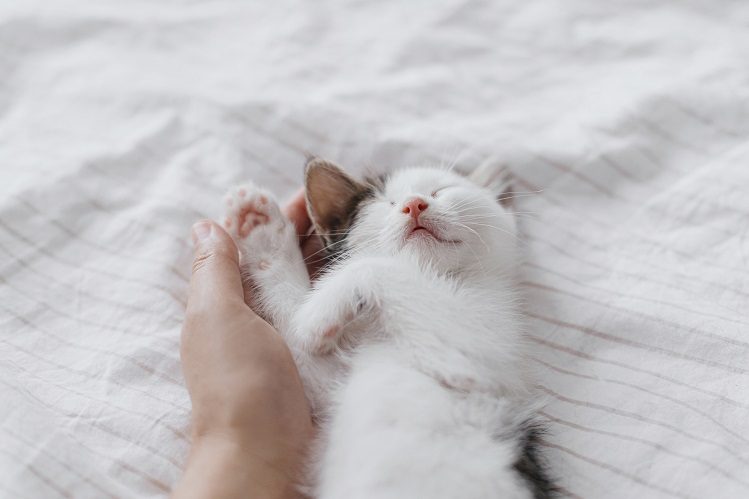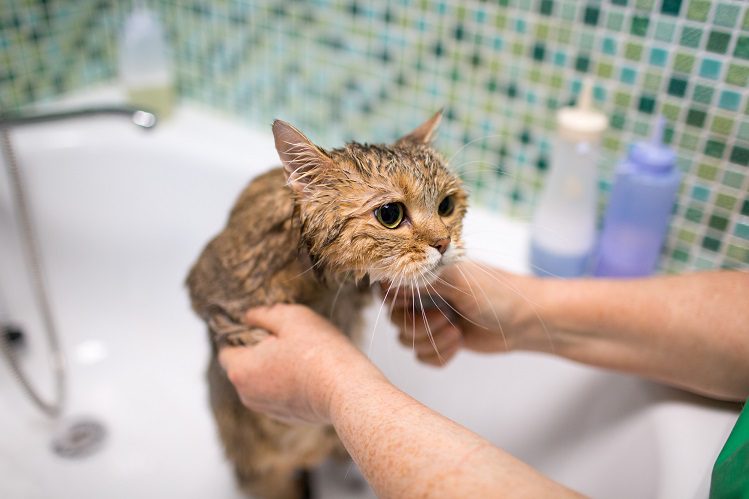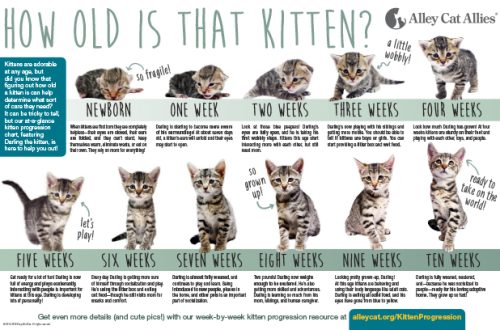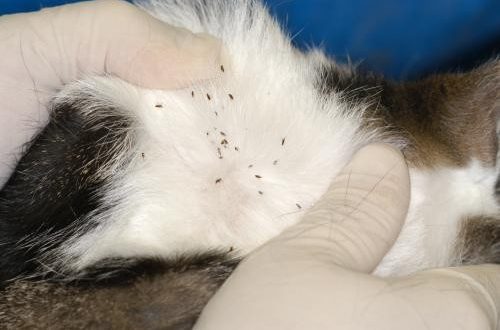
How to care for a kitten’s coat?
The coat of a small kitten is more like a light fluff, rather than a full-fledged fur coat. But careful grooming of the tomboy in early childhood plays an important educational role. Let the kitten learn as early as possible that there is nothing wrong with brushing and bathing. This will greatly simplify your life with a pet in the future.
At what age should a kitten be brushed? In one and a half to two months it is already possible. Choose special soft grooming tools for a small kitten that do not injure the delicate skin of the pet and light fluffy hair. For the first hygiene procedures, it is better to choose a comb with wide teeth and a soft slicker comb. When we even comb out a kitten purely symbolically a couple of times a week, we accustom him to this procedure.
When combing, act gently, it is important not to scare the kitten with sudden movements. Not only wield a comb, but also stroke your pet. It is important to remain calm, be careful and not make sudden movements.
During the procedure, constantly praise and encourage the kitten, let him feel the kind joyful intonation of your voice. For good behavior during combing, reward the ward with a treat that he especially likes. So you can turn the grooming ritual into communication and affectionate play with the kitten.
Let the need to comb out the fur cause the most positive emotions in a four-legged friend. Combing the fur is also useful, because it is a light massage that improves blood circulation.
The first molt in kittens begins at the age of six to eight months. The habit of a kitten to react calmly to brushing will help you a lot during this longest molt in a pet’s life. After the end of the first molt in the care of a teenage kitten, you can use the furminator. It will remove dead undercoat.

Many owners of mustachioed-striped ones are wondering if they wash kittens and how to do it at all?
Even if a four-legged friend lives in an apartment all year round and takes excellent care of his coat, he still needs to be bathed from time to time. Kittens are curious and explore every corner of the apartment whenever possible. Household dust, dirt brought into the house on shoes, crumbs from your bun that fell on the floor – all this settles on the coat of your ward every day. And when he washes, it gets into his digestive tract, threatening him with trouble. But how often should you bathe a kitten?
It is recommended to wash a completely domestic kitten once a month, in extreme cases – 1 time in 3 months. If your ward walks on the street, you need to wash him even more often.
When the pet is very dirty, washing is a must. Otherwise, the fool will try to lick the fur himself, and dirt and harmful substances will enter his body. If the contamination is small, you can use special cleaning wipes for pets.
Exhibition beauties usually need show grooming on the eve of the exhibition in order to appear at the competition in the best possible way. Bathing for medical reasons is a separate item. If your pet is attacked by parasites, urgently consult with a veterinarian about a suitable antiparasitic shampoo.
Be sure to follow the instructions. Just a few drops of a remedy and a balm (conditioner) are enough for a kitten for bathing: after washing, it is always necessary.
Check with your veterinarian and groomer for the right shampoo and conditioner. It must be special cosmetics for pets, products for humans are not suitable, they will only harm the skin. To date, many shampoos have been developed for specific breeds of cats. And there are special products designed specifically for kittens. A good example of such cosmetics for kittens is Traditional Line Talc from Iv San Bernard. Such products are suitable for frequent use, they can be used for daily cleansing of the paws and muzzle. The mild formula of the shampoo does not irritate the skin and mucous membranes, and the conditioner effectively moisturizes and nourishes the coat and skin.

The first bath of a kitten is a responsible task. It is important to follow the safety rules. Kittens have not yet developed a reliable mechanism for thermoregulation. Therefore, the room should be warm, without drafts.
Prepare one, and preferably two, shallow basins with very warm water. For kittens, bathing water temperatures ranging from 36 to 39 degrees are suitable. And this is the case when it is better to be careful and check the situation with a thermometer. It is better to put a towel at the bottom of the basin so that the kitten does not slip.
Carefully read the instructions for using shampoo and conditioner. Means can be concentrated, that is, before use, they must be diluted with water in the indicated proportions.
Gradually lower the kitten into the water, maximum up to the neck. Very gently, but confidently hold the pet with one hand, and with the other hand you should wet the fur. Make sure that water does not flow into the kitten’s ears, this can cause inflammation. The head of the crumbs can also be washed, but very carefully so that moisture does not get into the ears. Ears and eyes are best cleaned with a special lotion in a more relaxed environment.
Apply a little shampoo to the back of the bathing person and gently lather the coat evenly. Particular attention should be paid to the tail and paws. We rinse the kitten manually with water in a basin. Meeting with the water element is already stressful, so the use of a shower, tap water is excluded. After rinsing off the shampoo, apply conditioner to the coat of the ward. Wash off cosmetics at the end of bathing very carefully.
After washing, the kitten should be wrapped in a soft terry towel. You can hold the towel before this on a warm battery. Drying with a hairdryer is not required for a kitten. Besides, such a serious technique would almost certainly scare him. The towel will absorb all the moisture. Comb the towel-dried fur gently.
We sincerely hope that with our instructions, you and your little ward will meet both the first bath and the first molt in full combat readiness. We wish your pets good health, shiny coat and playful mood!





